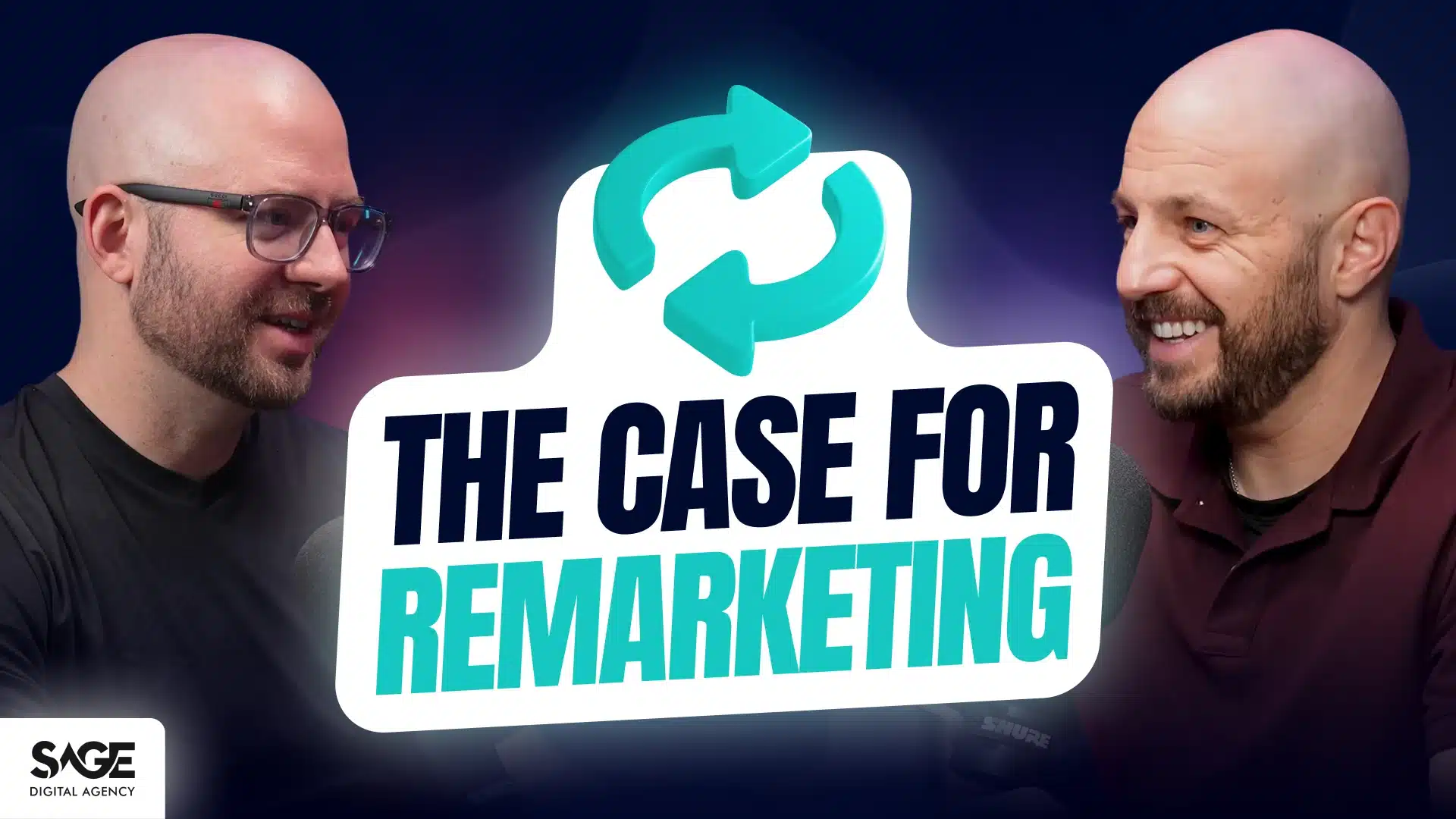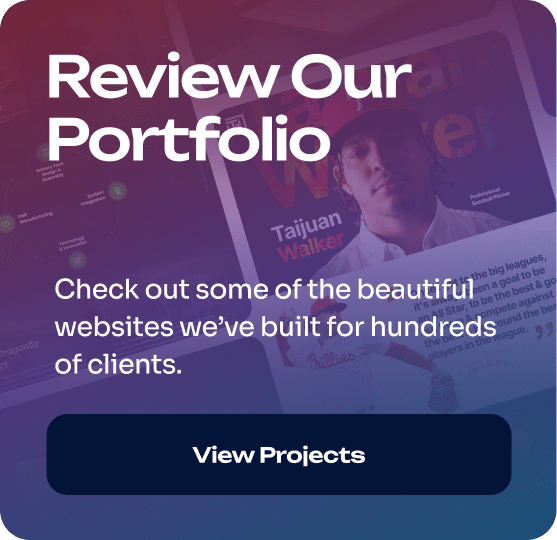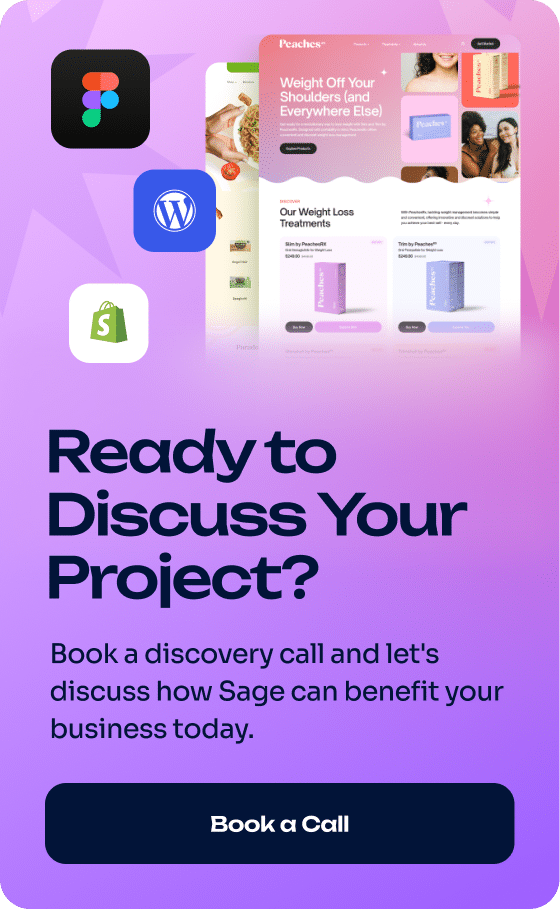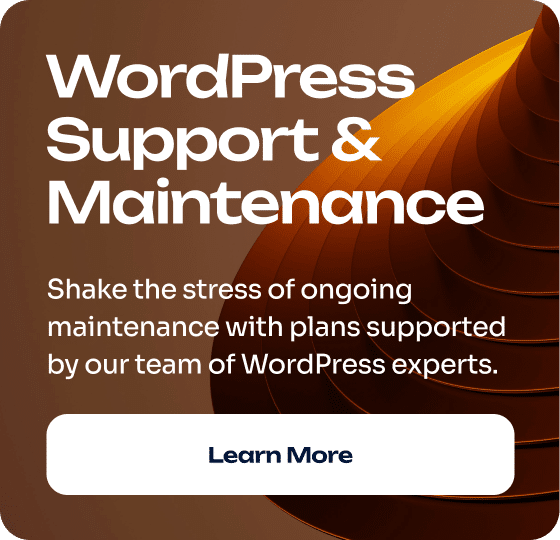Most B2B companies are leaving money on the table. They spend thousands driving traffic to their websites, then watch 90-95% of visitors disappear without converting. Smart marketers know there’s a better way.
Remarketing gives you a second chance to convert prospects who already showed interest in your services. But most companies either skip it completely or execute it poorly. This guide shows you how to build a remarketing strategy that actually works.
What Is Remarketing and Why B2B Companies Need It
Remarketing means showing targeted ads to people who previously visited your website. There are two main types, but we’ll focus on the one that matters most for B2B companies.
Search-based remarketing targets visitors who found you through specific search queries. Someone searches “web design company near me,” visits your site, doesn’t convert, then sees your ads as they browse other websites.
Intent-based remarketing casts a wider net based on broader behavioral signals. Think about searching “summer vacation” and suddenly seeing cruise line ads everywhere.
For B2B professional services, search-based remarketing delivers better results because you’re targeting people with demonstrated purchase intent.
The numbers tell the story. When someone visits your website for the first time, at least 90% won’t take action. They’re researching, comparing options, or simply got distracted. That first visit cost you money through SEO efforts, paid ads, referrals, or partnerships.
Remarketing lets you stay in front of these prospects for pennies compared to your initial acquisition cost.
The Hidden ROI and Cross-Platform Effects of B2B Remarketing
Most marketing channels require significant upfront investment with uncertain returns. Remarketing is different. You’re investing in people who already demonstrated interest in your services.
Here’s what makes remarketing particularly powerful for B2B companies:
You’re already paying for the traffic. Whether through Google Ads, content marketing, or referral partnerships, you’ve invested in getting people to your website. Remarketing maximizes that existing investment.
Cross-platform performance amplification. Here’s something most marketers miss: there’s a direct relationship between paid search spend and remarketing performance. Companies that increase Google Ads budgets often see corresponding increases in social media engagement and leads. This isn’t coincidental—you’re creating compound brand recognition effects across multiple touchpoints.
B2B buying cycles are long. Professional services often involve multiple decision-makers and substantial budgets. The person who visits your site today might not be ready to buy for weeks or months. Remarketing keeps you top-of-mind during that consideration period.
It reduces sales friction. When prospects finally book a consultation, they’ve already seen your testimonials, portfolio, and process through remarketing ads. Sales conversations become more tactical and less about proving credibility.
This is the digital version of the old “rule of seven”—people need multiple touchpoints before they’re ready to buy. Remarketing provides those touchpoints efficiently.
Common Remarketing Mistakes That Waste Your Budget
The biggest problem isn’t that companies avoid remarketing. It’s that they do it wrong.
Poor targeting leads to irrelevant placements. Your law firm ads shouldn’t appear on children’s gaming apps. Professional service ads need strategic placement on business-relevant websites where your prospects actually spend time.
Generic creative gets ignored. Canva templates and stock photos won’t cut it in today’s competitive landscape. Prospects see dozens of ads daily. Yours needs to stand out with authentic testimonials, portfolio pieces, or process explanations.
Broken tracking creates blind spots. Many companies spending significant money on digital marketing have fundamental tracking problems. Specific breakdown points include:
- Outdated WordPress plugins that conflict with tracking codes
- Site updates that accidentally delete tracking scripts
- Plugin conflicts that prevent pixels from firing
- Platform updates that change tracking requirements
Wrong success metrics mislead optimization. Impressions are vanity metrics. What matters is click-through rates, view-through conversions, return visits, and the time between initial website visit and remarketing ad click.
The Vendor Accountability Problem
Here’s an uncomfortable truth: many companies already running Google Ads aren’t using remarketing—and that’s often a vendor problem, not a strategy decision.
Ask yourself: Is this malpractice by your vendor? Is it a skill gap? Have they simply not seen success with it before?
For most B2B companies (excluding immediate-need services like emergency plumbing), remarketing should be standard. If your current vendor isn’t running remarketing campaigns, question why this high-ROI opportunity is being ignored.
Red flags with current vendors:
- Running paid ads without remarketing campaigns
- Unable to explain their remarketing strategy clearly
- Providing dashboard reports without business context
- No daily monitoring of tracking accuracy
- Generic creative that looks like template-generated content
Setting Up B2B Remarketing for Different Business Sizes
Your remarketing approach should match your business size and traffic volume.
Small Business (10-20 Daily Visitors)
Don’t let low traffic discourage you from remarketing. Small businesses actually have advantages here.
You don’t need elaborate email sequences or extensive content libraries. A few high-quality static images or short videos can effectively re-engage your small but qualified audience. Since you’re reaching fewer people, costs stay extremely low—literally pennies per engagement.
The key is having some consistent traffic to create targetable audience segments. Once you have that foundation, remarketing becomes one of your highest-ROI marketing activities.
Mid-Size Business with Paid Traffic
If you’re already running Google Ads or have built organic traffic over time, remarketing becomes even more valuable.
Focus on message matching. If someone visits your estate planning page, show them estate planning testimonials and case studies. Don’t confuse them with unrelated services. A law firm with five practice areas should create separate remarketing campaigns for each service line.
This targeted approach works for any professional service. Web design agencies shouldn’t show hosting ads to prospects researching website development. Accounting firms shouldn’t promote tax services to visitors researching business consulting.
Enterprise Companies
Larger companies can leverage remarketing more sophisticatedly:
- Video testimonial libraries: Showcase different client types and industries
- Comprehensive process education: Multi-part video series explaining your methodology
- Team expertise demonstrations: Subject matter expert content that builds authority
- Industry-specific messaging: Tailor creative to different prospect segments
Even if you’re not currently investing heavily in paid advertising, remarketing enhances brand presence and message frequency for everyone visiting your website. Quality video content showcasing your expertise can be distributed to all website visitors through remarketing campaigns.
Tracking and Measurement Framework
Proper tracking separates successful remarketing campaigns from money-wasting experiments.
Avoid these meaningless metrics:
- Raw impression counts (vanity metric)
- Platform-provided conversion estimates (often inaccurate)
- Generic dashboard reports without business context
Focus on metrics that matter:
- Frequency per user (keep under 5-10 ad serves per specific ad)
- Click-through rate by audience segment
- View-through conversions: Did they return without clicking your ad?
- Time duration between initial visit and remarketing click
- Conversion patterns within your typical buying cycle
The Critical Importance of Daily Reporting
Here’s a critical operational point most companies miss: tracking problems compound quickly when undetected.
Set up daily reporting alerts for key metrics. Any significant day-over-day changes should trigger immediate investigation. Days cannot go by where tracking problems continue without you knowing.
Both your internal team and external vendors need accountability for tracking accuracy. If you discover weeks or months of corrupted data, you’ve made expensive optimization decisions based on false information.
Understanding B2B Buying Cycles and Attribution Windows
B2B purchasing decisions take time. Different services have different consideration periods:
Quick decisions (under 7 days): Emergency services, immediate needs like plumbing or IT fixes Standard B2B cycle (14-30 days): Most professional services, consulting, smaller software purchases Complex purchases (30-90+ days): Enterprise software, major consulting engagements, large service contracts
Someone researching website development might take 2-3 days before making initial calls. Then they’ll have multiple sales conversations, review proposals with their team, and compare options with other vendors. The entire process can stretch two weeks or more.
Your attribution window should match your actual sales cycle, not platform defaults. Track conversion patterns at 3 days, 7 days, 30 days, 60 days, and 90 days to understand your true buying cycle.
Map your remarketing messages to these decision stages. Show portfolio pieces early in the cycle. Share client testimonials during the evaluation phase. Promote your process and team during final decision-making.
Content Creation for B2B Remarketing
Quality creative makes or breaks remarketing success. Generic templates get lost in the noise of professional advertising.
Effective B2B remarketing content includes:
- Client testimonial videos with specific results
- Portfolio showcases relevant to the visitor’s interests
- Process explanations that build confidence
- Team introductions that humanize your company
- Case studies demonstrating expertise in their industry
Quick content creation approaches:
- “Top 10 Questions Our Best Clients Ask”: Address real prospect concerns through simple graphics or short videos
- Branded testimonial quotes: Turn written testimonials into visual quote cards
- Simple process explanations: Film yourself explaining your approach on a phone
- Behind-the-scenes content: Show your team, office, or work process authentically
Content creation investment levels: Professional studio time creates polished video content at scale. Even simple talking-head testimonials perform better than static graphics when executed well.
On-brand static graphics work for smaller budgets, but they must tell a compelling story. Generic templates with placeholder text won’t compete with well-funded competitors.
Avoid common content mistakes:
- Stock photos that look generic and forgettable
- Text-heavy graphics that don’t work on mobile devices
- Overly promotional messaging that feels pushy
- Content that doesn’t match the visitor’s demonstrated interests
Sequential Messaging and Advanced Strategies
Don’t show the same ad repeatedly. Create a sequence that tells your complete story:
Week 1: Portfolio pieces or case studies relevant to their visited page Week 2: Client testimonials with specific results Week 3: Process explanations or team introductions
Week 4+: Re-engagement offers or different service areas
Advanced remarketing strategies:
Sequential messaging campaigns tell complete stories over multiple ad impressions. Show your portfolio first, then testimonials, then process explanations as prospects move through your funnel.
Cross-platform coordination ensures consistent messaging whether prospects see your ads on Google, Meta, or LinkedIn. Each platform serves a different role in the overall nurture sequence.
Lifecycle-based segmentation treats 3-day visitors differently than 30-day visitors. Recent visitors might need credibility-building content while older visitors might respond better to re-engagement offers.
Platform Strategy and Implementation
Different platforms serve different purposes in B2B remarketing.
Meta (Facebook/Instagram) works well for professional services because people browse these platforms during downtime. Your ads appear in a casual browsing context, which reduces resistance to promotional messaging.
Google Display Network reaches prospects on business websites and industry publications. This context feels more natural for B2B advertising.
LinkedIn targets professionals in specific roles and industries, making it valuable for services that sell to particular business functions.
YouTube is ideal for high-quality client testimonials or process explainers that build deep credibility.
Start with one platform and execute it well before expanding. Platform-specific creative and messaging strategies differ significantly.
Creative Frequency and User Experience
Don’t blast the same person with the same ad repeatedly. Cap your exposure to:
- 3–5 views per specific ad per user (up to 10 total across different ads)
- Different messages over time (testimonials → portfolio → offer)
- Vary formats (image, video, carousel)
This not only prevents fatigue—it guides the user through your funnel strategically while maintaining a professional, helpful presence rather than feeling pushy.
Common Implementation Challenges
Broken tracking across platforms. Companies spending six figures annually on advertising often have fundamental measurement problems. Regular audits prevent months of corrupted data.
Website updates breaking tracking. Plugin changes, platform modifications, or site updates can break tracking without obvious warning signs. The damage compounds over weeks or months of invisible data loss.
Vendor skill gaps. Many agencies lack remarketing expertise or fail to implement it properly for clients. This represents a significant missed opportunity given remarketing’s ROI potential.
Content resource limitations. Companies without existing video testimonials or portfolio pieces need content creation before launching remarketing campaigns.
Unrealistic success expectations. Remarketing builds brand awareness and consideration over time. Don’t expect immediate direct conversions like search advertising.
Measuring Success and ROI
Short-term indicators:
- Click-through rates above 0.5% indicate engaging creative
- Return visit rates show message relevance
- View-through conversion rates reveal indirect impact
- Frequency distribution helps optimize ad serving
Long-term business impact:
- Reduced time-to-conversion for remarketing-exposed prospects
- Higher close rates from pre-warmed leads
- Decreased cost-per-lead across all marketing channels
- Improved brand recognition in prospect surveys
Track leads that mention seeing your ads or content during sales conversations. This anecdotal feedback often reveals remarketing impact that attribution models miss.
Implementation Roadmap and Action Steps
Week 1: Foundation Setup
- Audit your current tracking setup to ensure accurate measurement across all platforms
- Inventory existing content assets suitable for remarketing campaigns (videos, testimonials, portfolio pieces)
- Map your typical sales cycle timeline to inform attribution window and messaging sequence decisions
Week 2: Platform and Creative Preparation
- Choose one platform to start with based on where your prospects spend time online
- Set up proper audience segmentation based on pages visited and actions taken on your website
- Create quality creative assets that tell your story authentically rather than using generic templates
Week 3: Launch and Monitoring
- Establish daily reporting to catch tracking issues before they compound into major data problems
- Launch initial campaigns with conservative frequency settings
- Monitor tracking accuracy and performance daily
Week 4+: Optimization and Expansion
- Begin optimizing based on early performance data
- Expand successful campaigns to additional audience segments
- Test sequential messaging strategies
- Consider additional platforms once initial success is proven
Key Takeaways and Next Steps
Remarketing represents one of the highest-ROI opportunities in B2B marketing. Most companies either ignore it completely or execute it poorly, creating competitive advantages for those who do it right.
The companies winning in B2B marketing understand that acquisition is just the beginning. Remarketing turns that expensive traffic into long-term revenue by staying in front of prospects throughout their decision-making process.
Critical success factors:
- Proper tracking setup with daily monitoring
- Quality creative that builds credibility rather than generic templates
- Message relevance based on actual visitor behavior
- Attribution windows that match your real sales cycles
- Vendor accountability for execution and results
Start with one platform, execute it well, and expand systematically. The investment is minimal compared to your existing traffic acquisition costs, but the compound effects across all your marketing channels can be substantial.
Frequently Asked Questions
How much traffic do I need to make B2B remarketing worthwhile? Even 10-15 daily visitors can support effective remarketing campaigns. Small audiences mean lower costs, making ROI achievable at minimal traffic levels. The key is having consistent traffic to create targetable audience segments.
What’s the optimal frequency for showing remarketing ads? Keep individual user impressions under 3-5 per specific ad (up to 10 total across different ads). Higher frequencies risk annoying prospects and wasting budget on over-saturated audiences.
How long should I wait before remarketing to website visitors? Start remarketing within 24-48 hours of the initial visit while your brand is still fresh in their minds. Extend campaigns for 30-90 days depending on your sales cycle.
Which platforms work best for B2B professional services remarketing? Meta provides the largest reach, Google Display Network offers business-context placements, and LinkedIn enables precise professional targeting. Start with one platform and expand after proving success.
What’s the biggest mistake companies make with B2B remarketing? Poor tracking implementation creates blind spots in campaign performance. Companies often pause successful campaigns because broken attribution makes them appear ineffective. Daily monitoring prevents this.
How do I create remarketing content without a big budget? Focus on client testimonials and simple process explanations. Even basic video testimonials outperform generic graphics when they address real prospect concerns. “Top 10 Questions Our Best Clients Ask” makes an excellent starting point.
Should I use the same message for all website visitors? No. Segment by page visited and tailor messages accordingly. Someone researching estate planning should see different content than someone looking at business law services. Message relevance is critical for performance.
How do I know if my remarketing campaigns are actually working? Track return visits, engagement rates, view-through conversions, and sales cycle timing. Prospects exposed to remarketing typically convert faster and mention seeing your content during sales conversations.
What should I do if my current vendor isn’t running remarketing campaigns? Question why this high-ROI opportunity is being ignored. It often indicates skill gaps rather than strategic reasoning for companies already running paid advertising. Consider it a red flag requiring explanation.
How does remarketing impact my other marketing channels? Remarketing typically improves performance across all channels by increasing brand recognition and message frequency. Companies often see correlated improvements in organic traffic and social media engagement when remarketing is active.
How do I set attribution windows for B2B services? Match your attribution window to your actual sales cycle. Track conversion patterns at 3, 7, 30, 60, and 90 days to understand your true buying cycle, then set attribution windows accordingly rather than using platform defaults.
What are view-through conversions and why do they matter? View-through conversions track people who saw your remarketing ad but didn’t click, then converted later. This reveals the indirect brand-building impact of remarketing that click-based metrics miss.





